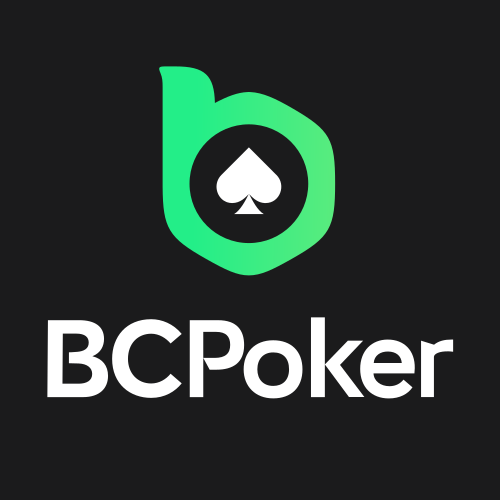How To Play 5 Card PLO : The Beginner Playbook
You’ll learn the 5 Card PLO rules, a clean gameplay flow, what beats what, simple preflop priorities, a first postflop plan, and bankroll management that actually protects you from swings.
Quickstart: what is 5 Card PLO and how a hand works
5 Card Omaha, often called 5 Card PLO or PLO5, is Omaha Poker with five hole cards. You get five cards face down, five community cards come out, and you must build your best five‑card hand using exactly two of your hole cards and exactly three from the board. That “two from hand, three from board” rule is ironclad in all Omaha variants.
Pot‑limit betting means the max bet or raise equals the current pot size, so pots get big, but there’s still a cap per street . If you’re brand new and just want the basics, here’s how to play 5 Card PLO, step by step:
- Blinds post and everyone gets five cards
- Preflop betting starts to the left of the big blind
- Flop: three community cards, then betting
- Turn: one community card, then betting
- River: one community card, then betting
- Showdown: best five‑card hand wins, using exactly two hole cards + three board cards
You’ll ask this a lot at first: What is 5 Card PLO compared to 4‑card PLO? Easy. That fifth card adds more draws and more ways to make big hands. The strength of winners goes up, small flushes lose more often, and preflop “pretty” hands without a plan get punished. You’ll lean harder on discipline, position, and nut potential.
Key reminder for 5 Card Omaha rules and 5 Card PLO rules: you never “play the board” like Hold’em. You always use two from your hand, no exceptions.
Best Omaha Poker Sites in 2025
BCPoker NEW
Get $5 FREE (only with App Registration)
$200 First Deposit Bonus
Incredibly Soft Action
WPT Global
Free Tournament tickets up to $480
Free Casino Coin up to $100
30% Rakeback
Network: Independent
Phenom Poker
up to 35% Rakeback
Soft Action
Network: Independent
Juicy Stakes Poker
36% Rakeback
Spin & Gos with up to 12,000x your Buy-in
Network: Horizon Poker
Champion Poker
Network: iPoker
5 Card PLO rules and gameplay flow
Let’s make the rules painless and clear. When people search “5 Card Omaha rules” or “5 Card PLO rules” they want the short version that prevents expensive mistakes.
- Blinds and the button decide the order of action. After the deal, the action starts preflop. After each street (flop, turn, river), action runs clockwise starting from the first active player to the left of the button.
- Showdown: if two or more players remain after the river betting, reveal hands. Best five‑card hand wins, built from exactly two hole cards + three board cards.
Level up your game with the Pot Limit Omaha training school PLO Mastermind.

Common rule mistakes in PLO5 poker:
- Misreading flushes: the board has four clubs, but you only have one club in your hand. You don’t have a flush. You need two suited cards in your hand to claim a flush.
- Counting three pairs. There’s no three‑pair hand in poker. Your five‑card hand will end up as two pair at most plus kicker.
- Playing the board. You can’t. Omaha always needs two from hand, three from board.
If you’re teaching a friend how to play 5 Card PLO, drill this: “two from hand, three from board” three times before you deal. It saves headaches and money .
What beats what in 5 Card PLO
Hand rankings are the same as Hold’em and 4‑Card PLO. The difference in PLO5 poker is frequency and strength. More strong hands show up, and the nuts shift more often as streets come out.
- Royal Flush: A K Q J T of the same suit
- Straight Flush: five in a row, same suit
- Four of a Kind: four cards of the same rank
- Full House: three of a kind + a pair
- Flush: five cards of the same suit
- Straight: five in a row, any suits
- Three of a Kind
- Two Pair
- One Pair
- High Card
You still must build that with exactly two of your own cards and three from the board. If the board shows four hearts and you hold A♥ 2♥, you do have a flush. If you hold A♥ K♠ with only one heart, you don’t .
We’ll keep hand reading PLO‑legal. When you think “Do I have a flush?” check your hand first. Do you have two hearts? Great. Then check the board and the highest possible heart. That habit will save you from calling off with second‑best hands and burning money.
PLO5 starting hand selection: build hands that make the nuts
If you take only one lesson from me on 5 card PLO strategy, take this: your five cards should work together. You need connectivity, good suits, and high cards. If your hand can make nut straights and nut flushes, you print. If it makes weak straights and small flushes, you bleed. That’s 5 card Omaha 101, and it’s how you fix your preflop leaks fast .
What I look for in PLO5 poker:
- Connectivity: think run‑downs and only small gaps. 9‑8‑7‑6‑5 with two suits is a dream. Q‑J‑T‑9‑8 with an ace‑high suit is even sweeter.
- Suits: double‑suited is great, but suit quality matters. Ace‑high suits beat king‑high and queen‑high when money goes in. Weak suits get dominated all the time!
- High cards: winning straights often involve broadways. Baby straights and baby flushes lose too often, especially multiway.
Hands I fold a lot in early position:
- Dangling pairs like K‑K‑9‑4‑7 with bad suits. In 5 card Omaha, that pair will trap you if the rest of the hand is dead weight.
- Junky double pairs with no connectivity.
- Single‑suited low run‑downs that always chase second‑best.
Hands I raise:
- A‑A with connectivity and suits. A‑A‑J‑T‑9 double‑suited is premium.
- Strong, connected broadway run‑downs.
- Double‑suited, high‑carded rundowns with few gaps .
Why this matters: in PLO5, someone often has a higher flush draw or a better straight draw. Your plan is to bring the nuts to the fight as often as possible. That’s the heart of sound 5 card PLO strategy for PLO5 poker.
PLO5 preflop plan
Position rules in Omaha Poker because postflop is messy. In early seats, play tight. In late seats, widen up, but still aim at nuttiness and clean suits .
- UTG/EP: premium double‑suited, very connected, ace‑high suits. Fold most middling pairs with dead side cards.
- MP: you can add some strong single‑suited run‑downs and hands with one small gap.
- CO/Button: open more speculative connected hands, but keep the nut bias. Iso‑raising limpers with solid double‑suited hands prints value.
- Blinds: defend with clear plans. Don’t splash with weak, dominated single‑suited trash.
If you’re building your own 5 card PLO starting hand chart, add a simple color code by seat. Green = always open. Yellow = open if folds to you or soft table. Red = fold. Keep it simple while you’re new.
For a deep dive I highly recommend the Omaha training site Run It Once:

Tip: rake is a thing. At micro limits, opening too wide from early seats burns money. Be picky. Check out the best Omaha Poker sites and top rakeback deals.
Preflop plays that actually win in PLO5
Let’s keep it practical and friendly to a 5 Card PLO starting hand chart mindset.
- Raise for value, not vanity. If you wouldn’t be happy to build a pot with that hand out of position, you probably shouldn’t open it from EP.
- 3‑bet linear in position. Grab the premium double‑suited and connected group. Out of position, be extra picky.
- Iso‑raise limpers when you can isolate and play heads up in position. Limp pots go multiway and punish non‑nut shapes.
- Avoid limp‑calling weak stuff hoping to “see a flop.” You’ll see too many flops in PLO5 poker if you do that.
If you use my 5 card PLO calculator for preflop equity checks during study, compare your candidate opens against reasonable defending ranges. A 5 card PLO calculator won’t hand you perfect ranges, but it keeps your intuition honest and helps you tune your 5 card PLO strategy while you build your own 5 Card PLO starting hand chart.
You’ll notice I keep saying “how to play 5 Card PLO” in terms of shape and suits. That’s on purpose. Your future win rate comes from picking better shapes more often. That’s the core of 5 card Omaha rules in practice: follow the 2+3 rule, then fill those two hole cards with quality.
Postflop: a first profitable decision tree
Okay, here’s the part that wins money fast. Good postflop play in PLO5 poker means you bet your strong hands big, you pick your semi‑bluffs wisely, and you don’t get married to non‑nut hands without redraws. We’ll use a simple decision tree that fits a beginner’s 5 card PLO strategy.
On the flop, put your hand into one of these buckets:
- Nuts or near‑nuts with redraws
- Strong made hand without redraws
- Nutted draws and combo draws
- Marginal showdown hands
- Air with useful blockers
How to play them:
- Nuts or near‑nuts with redraws: bet big on wet boards and build the pot. It’s fine to go multi‑way when you’re way ahead and can improve further .
- Strong made hand without redraws: control pot size, especially at higher SPR. You don’t need to “protect” by shoving money into ranges with tons of equity. Let them pay later if safe cards fall.
- Nutted draws and combo draws: play them hard when stacks are shallower or when you can fold out dominated draws. Semi‑bluffing here is a big part of a clean 5 card PLO strategy.
- Marginal showdown hands: check more, especially out of position. Bluff less on boards that smash your opponents.
- Air with blockers: pick spots. Don’t torch money on calling stations. Versus fish with inelastic calling, bluffing less and value‑betting more makes you money.
Bet sizing vs weaker players
- They call too often with draws and pairs. So you size up your value bets. Bigger bets mean bigger pots with worse hands calling. This is Omaha candy land, enjoy it .
- Keep your bluffs smaller when you do bluff them. Save the huge bluffing for more disciplined opponents.
C‑betting and delaying
- On super wet boards, c‑bet less often, especially out of position. When you do bet, go bigger with strong hands or strong draws.
- Versus passive callers, double barrel more when turns hit your range, and delay your c‑bet on boards where they rarely fold flop and your turn improves the story.
Block bets on the river
- Out of position with a medium‑strength hand that hates big bets coming at it, block bet small on the river. It sets the price and gets called by worse a lot in soft pools.
When to lead (donk) in PLO5
- You can donk on textures where your out‑of‑position range has more nutted combos than the preflop raiser, and you hold a strong made hand or nutted draw that denies equity well. Donk small with hands that want to set price; donk bigger with nutted hands or strong redraws.
Key takeaway: value is king at small stakes. The typical PLO5 poker pool overcalls and under‑raises. Push value, choose fewer pure bluffs, and let them pay for draws .

Board textures and plan by position
- Paired, dry flops: your bluffs work better, but check that you actually block the best full houses.
- Low, straight‑heavy flops: small flush draws and weak straights are traps. If you have the nut straight with no redraws, be careful when stacks are deep.
- Two‑tone wet flops: size up your value. Your opponents don’t fold pair + draw. They love calling. Charge them.
Out of position is tough in PLO5. Play more straightforward lines: check more, pick your battles, and respect multiway action. In position, press your edge with bigger value bets and well‑timed barrels.
Why redraws run the game in 5 Card PLO
Redraws are extra ways to improve from a strong hand to an even stronger hand later. In 5 Card Omaha, they decide stacks all the time. You can flop the nuts and still be only a small favorite against a hand with combo draws. Without redraws, your nuts can be fragile at higher SPRs.
- Nut straight with nut flush redraw: push hard.
- Bare nut straight with no backdoors, deep stacks: control the pot.
- Set with backdoor nut flush and boat cards: that’s a hand you can fight with across turns and rivers.
Once you see this, your whole 5 card PLO strategy changes. You’ll stop overplaying “current nuts” without backup. You’ll start building pots when you have the nuts and ways to get even nuttier.
Bankroll management for PLO5 to PLO100
Variance in PLO5 poker is bigger than you think. You’ll have more multiway pots, more turn‑river action, and more swingy lines. So you need a simple, strict setup that you actually follow.
My house rules you can copy:
- Core roll: If you’re brand new, use a minimum of 100 buyins. If you’re seasoned, 60 to 75 can work if you have the money to reload your roll. Swings can get crazy.
- Shot taking: move up when you have at least 20 extra buy‑ins for the higher stake and a couple soft tables ready.
- Move‑down triggers: drop after 10 buy‑ins lost at your current shot or 20 at your main stake. Pride is expensive, moving down is free.
- Session stop‑loss: 3 to 5 buy‑ins. If you’re tilted, 2 buy‑ins.
- Table selection: sit with players who limp, call too wide, and don’t raise enough. You’ll value bet them to pieces .
Think of bankroll management as your edge amplifier. It keeps you in the seat long enough to realize your skill. It also holds “one bad night” from nuking your month, or even your whole bankroll. That’s how to play 5 Card PLO like an adult.
Check out our Poker Mindset Guide, where you will also find sections about how to handle variance and how to become mentally strong.
Biggest beginner leaks in 5 Card PLO
- Overvaluing pocket pairs with dead side cards. In 5 card Omaha, the pair isn’t the star. The whole hand is the star.
- Falling in love with small flushes. With five cards out there, higher flushes show up a lot. If you can’t make the nut flush, be careful when money gets deep.
- Misreading your hand. You need two suited cards in your hand to claim a flush. You need two from hand for all hands, period.
- Playing too many hands in early position. Postflop gets hard fast. Tighten up.
- Bluffing too much vs callers. Value bet big instead. This is straight from the “beat the fish” playbook and it works.
Pro tip: fast‑play strong hands more often. Slow playing on wet boards gives free equity to draws. You want chips in now, not after they get there.
Action checklists
Preflop quick check
- Do my five cards work together?
- Do I have strong suits, ideally ace‑high?
- In this position, am I happy to build a pot with this hand?
- Would I 3‑bet this hand in position? If no, why am I opening it up front?
Flop quick check
- Which bucket is my hand in: nuts with redraws, strong without redraws, combo draw, marginal showdown, or air with blockers?
- What size gets called by worse hands often? Size up your value vs callers.
- If I’m bluffing, do I have good blockers or equity? Would this opponent even fold?
Turn quick check
- Did the turn help my range or theirs?
- Can I double barrel for value or fold equity, or should I delay? Against passive callers, double barrel good turns more often.
- If I’m out of position, does a block bet line set the best price for me on river later?
River quick check
- Do I have a clear value bet? If yes, go for it, especially vs calling stations .
- If I’m out of position with a medium hand, does a small block bet get called by worse and avoid a big bet coming back?
- If I’m bluffing, do I block the obvious nut hands, and does this opponent fold?
Study that moves the needle
Use my 5 card PLO calculator during off‑table study to check your equity guesses. Compare connected double‑suited hands to clunky single‑suited pairs. Test how your equity changes when an ace‑high suit changes to a queen‑high suit. Do this for 15 minutes after a session, while your memory is fresh. A 5 card PLO calculator helps your intuition catch up to the format and gives you cleaner 5 card PLO strategy notes you can trust.
I also like printing a simple 5 Card PLO starting hand chart and marking it with “Open/3‑bet/Call/Fold” for each seat. Update it weekly. It keeps your decisions fast and honest. Just make sure not to use it while playing, as a lot of poker sites do not accept it. Over a month, you’ll feel your preflop choices smooth out.
While you’re learning how to play 5 Card PLO, set the bar low but consistent: three study blocks per week. One on starting hand selection, one on postflop buckets, one on reviewing big pots. If you’re asking “what is 5 Card PLO” a lot at the table, your study time needs more rules reps. If you’re asking “how to play 5 Card PLO better postflop,” focus on redraw logic.

Exploiting weaker players (your built‑in edge)
This part is fun. Recreational players at PLO5–PLO100 love to call. They don’t adjust based on your size, which means their calling ranges are inelastic. That’s your edge. You size up your value bets, and you cut out most big bluffs.
- Value bet larger when you have strong hands. They call with worse and draws anyway.
- Keep bluffs smaller when you take them. Risk less, get the same folds.
- Don’t slowplay on wet boards. Bet now, not later.
- When checked to by a weak player, bet for value and protection often.
If you only remember one line about how to play 5 Card PLO vs a caller: more big value, fewer big bluffs.
Position, table selection, and small edges that compound
Position shows up in every decision. On the button, your value hands win more, your bluffs work more, and your marginal hands see cheaper rivers. In the blinds, play tighter and keep your pot sizes cleaner.
Soft tables beat hard work. Sit with limpers and callers, not three regs in a row. Use waitlists and watch a few hands before you sit. You’ll find those comfy PLO5 poker tables if you look for them. If you play online on different rooms, track your sessions. The same 5 card PLO starting hand chart you built helps across rooms. It also keeps your 5 Card PLO rules sharp.
Yes, I’m repeating “5 Card PLO rules” and “5 card Omaha rules” on purpose. Follow the rules, avoid fancy play syndrome, and your winning graph trends up.
A quick “don’t punt” checklist for rivers
- Don’t turn a clear medium‑strength hand into a bluff versus a calling station. Take the showdown.
- If you block the nuts and your opponent is capable, a well‑sized bluff can work. Be picky.
- Prefer small block bets out of position with hands that hate big bets. You’ll be shocked how often they get called by worse and how many big bets you avoid.
FAQ
It’s Omaha with five hole cards. You must use exactly two of your hole cards and three board cards to make your hand. Betting is pot‑limit by default. Stronger hands show up more often than in 4‑Card PLO, so play hands that make the nuts and have redraws.
Learn the 2+3 rule. Pick connected, double‑suited, high‑card hands preflop. Size up value bets versus callers. Respect multiway action and beware small flushes. Protect your bankroll with move‑down rules you’ll follow.
Donk on flops where your out‑of‑position range has more strong hands, and your hand is a nut hand or a strong draw that benefits from denying equity. Use smaller donks to set the price with medium‑strong hands and bigger donks with nutted hands or strong redraws.
It helps a ton. Build your own simple 5 Card PLO starting hand chart by position and update it weekly as you learn. It keeps your preflop discipline tight while you grow your 5 card PLO.







